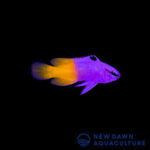Dragons in the Bridges and Waterworks of China
The dragon (龙, lóng) is one of the most important symbols in Chinese culture, often representing power, wisdom, prosperity, and control over water. Beyond its role in mythology, religion, and folklore, the dragon has been deeply integrated into Chinese architecture, especially in bridges, canals, dams, and other waterworks. Due to its connection with rain, rivers, and floods, the dragon became a natural symbol in engineering projects related to water management.
This article explores the role of dragons in Chinese bridge construction and waterworks, examining their symbolic meanings, architectural features, historical significance, and famous structures adorned with dragon imagery.
1. The Symbolism of Dragons in Chinese Water Engineering
Dragons have long been associated with water and natural forces. In Chinese belief, dragons are seen as divine creatures that control rain, rivers, lakes, and seas. Their presence in bridge and waterwork designs serves both functional and spiritual purposes.
1.1 Dragons as Protectors of Bridges and Water Structures
- Chinese bridges often feature dragon carvings to ward off floods and natural disasters.
- In traditional belief, placing dragon symbols on a bridge ensures its longevity and stability.
- Some bridges have stone dragon heads facing the river, symbolizing control over turbulent waters.
1.2 Dragons as Symbols of Imperial Power
- Many historic bridges and dams built under imperial rule were adorned with dragon imagery, reinforcing the Emperor’s divine mandate.
- The Emperor, considered the “Son of the Dragon”, often commissioned bridges decorated with imperial dragon motifs to showcase his power.
1.3 The Feng Shui Influence of Dragons in Water Engineering
- Feng Shui principles played a role in bridge placement, and dragons were believed to harmonize the energy of the flowing water.
- The direction and shape of dragon carvings on bridges were designed to redirect negative energy and bring prosperity.
2. The Role of Dragons in Traditional Chinese Bridges
Chinese bridges are famous for their intricate designs and spiritual symbolism, and many of them incorporate dragon motifs in different ways.
2.1 Dragon Head Bridges (龙头桥, Lóngtóu Qiáo)
- Some ancient bridges feature dragon head sculptures at both ends, believed to control water flow and prevent flooding.
- The stone dragon heads often face the river to symbolize watchful guardianship.
- Famous example: The Lugou Bridge (卢沟桥, also known as the Marco Polo Bridge), built in the 12th century, features hundreds of carved dragon balustrades.
2.2 Arch Bridges with Dragon Patterns
- Traditional Chinese arch bridges (拱桥, gǒng qiáo) often incorporate dragon relief carvings along their railings or support structures.
- Some bridges are built to resemble a dragon, with their curved shapes mimicking the body of a dragon leaping across the river.
- Example: The Anji Bridge (安济桥, Zhaozhou Bridge), built during the Sui Dynasty (605 AD), has hidden dragon patterns carved into its structure.
2.3 Wooden Bridges with Dragon Motifs
- Some historic covered wooden bridges in southern China feature painted dragons on the beams and pillars.
- The dragon images serve as spiritual guardians, believed to bring good fortune and safe passage.
- Example: Wind and Rain Bridges (风雨桥, Fēngyǔ Qiáo) built by the Dong ethnic group often include dragon decorations on their roofs.
3. The Role of Dragons in Chinese Waterworks and Dams
Aside from bridges, dragons are also significant in traditional Chinese water management systems, such as dams, canals, and irrigation projects.
3.1 Dragon Carvings in Ancient Dams and Water Gates
- Many stone dams built in ancient China feature dragon reliefs to signify control over floodwaters.
- These dragon images were believed to protect the dam from collapsing and ensure smooth water flow.
- Example: The Dujiangyan Irrigation System (都江堰, built in 256 BC) features stone dragon carvings symbolizing flood control and prosperity.
3.2 Dragon Pillars in Canal Systems
- In imperial China, some major canal junctions were marked with dragon pillars.
- These pillars served as spiritual markers to ensure the smooth and safe passage of boats.
- Example: The Grand Canal (大运河, Dàyùnhé), one of China’s most famous water projects, has several ancient dragon-themed locks and gates.
3.3 The Dragon’s Role in Rainmaking Rituals for Agriculture
- In times of drought, ancient Chinese farmers performed rain-calling rituals at dragon-decorated reservoirs.
- Some irrigation ponds and wells were named after dragons, as people believed dragons could summon rain.
- Example: Dragon Pool (龙潭, Lóngtán) in various Chinese regions is often associated with sacred water sources.
4. Famous Chinese Bridges and Waterworks with Dragon Motifs
Many historic Chinese bridges and water structures feature dragon imagery, reflecting both their cultural and functional significance.
4.1 Lugou Bridge (卢沟桥, Marco Polo Bridge)
- Located in Beijing, built during the Jin Dynasty (1189 AD).
- Features 485 carved stone lions, many of which have small dragons on their bodies.
- Served as a strategic military crossing and a symbol of imperial authority.
4.2 Zhaozhou Bridge (赵州桥, Anji Bridge)
- The oldest open-spandrel stone arch bridge in China, built during the Sui Dynasty.
- Hidden dragon carvings under the bridge arches.
- A masterpiece of ancient Chinese engineering and dragon symbolism.
4.3 Dujiangyan Irrigation System (都江堰)
- Built over 2,000 years ago to control flooding of the Min River.
- Features stone dragon carvings symbolizing harmony between humans and nature.
- One of China’s greatest hydraulic engineering projects.
4.4 Fengyu Bridge (风雨桥, Wind and Rain Bridge)
- Built by the Dong ethnic group.
- Features painted dragon decorations on the roof beams.
- Serves as a symbol of protection and cultural heritage.
5. Modern Adaptations of Dragon Motifs in Bridge and Waterwork Design
Even in modern China, dragons remain a popular motif in bridge construction and water management projects.
5.1 Dragon-Themed Suspension Bridges
- Some contemporary bridges incorporate dragon designs in their railings, pillars, and lighting patterns.
- Example: Dragon Bridge in Chongqing, illuminated at night to resemble a flying dragon.
5.2 Dragon-Inspired Water Fountains and Dams
- Some modern dams and reservoirs feature giant dragon sculptures, emphasizing their historical and cultural significance.
- Example: Dragon Fountain in Hangzhou, which integrates water conservation with traditional dragon mythology.
Conclusion
Dragons have played a crucial role in Chinese bridge construction and waterworks, serving as symbols of protection, power, and prosperity. From ancient stone bridges to imperial irrigation projects, dragons have been incorporated into architectural design to honor water deities, prevent disasters, and reinforce imperial authority.
Even today, modern bridges and waterworks in China continue to use dragon motifs, keeping this ancient tradition alive. This enduring legacy highlights the deep cultural, spiritual, and practical connection between dragons and water engineering in Chinese history.



